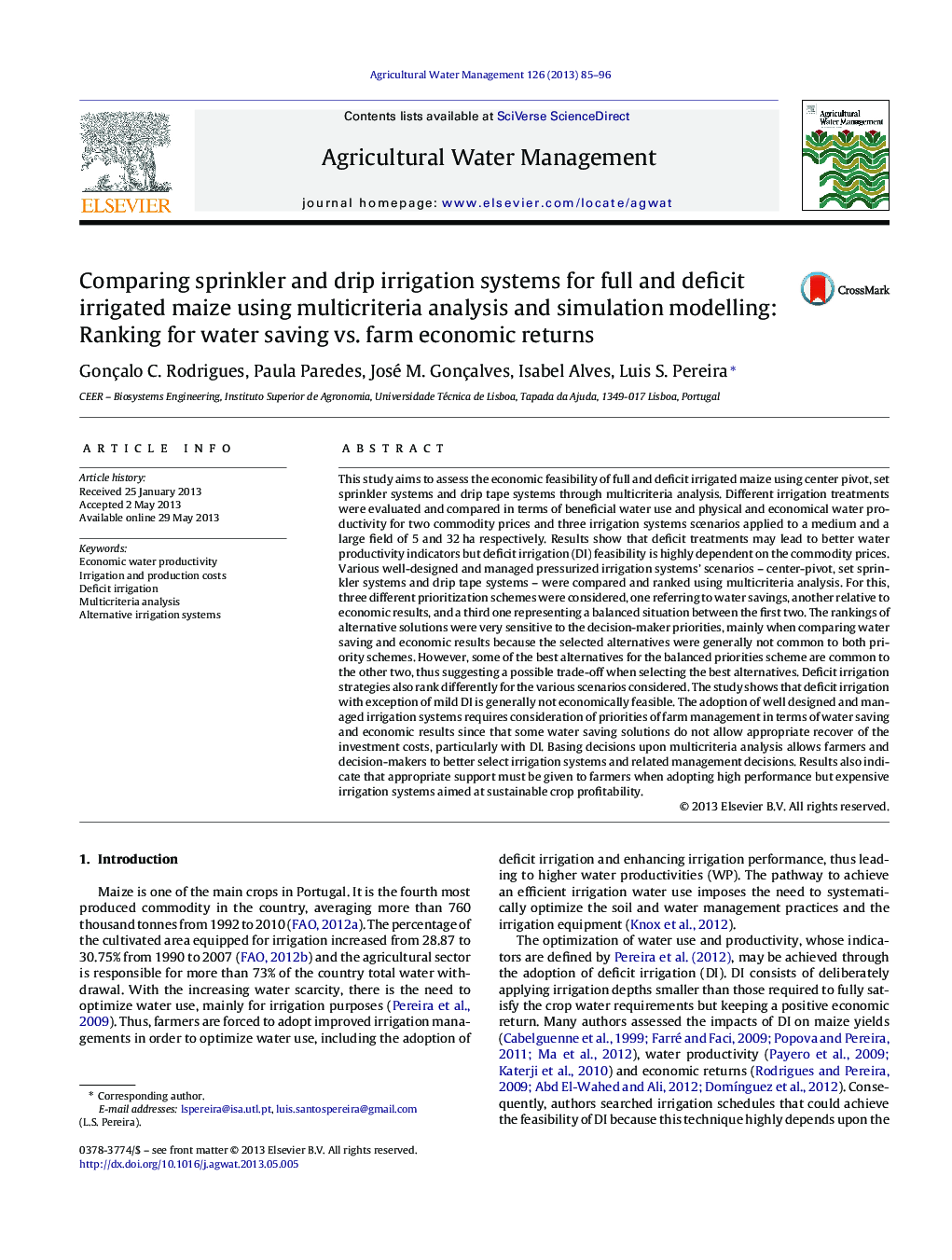| کد مقاله | کد نشریه | سال انتشار | مقاله انگلیسی | نسخه تمام متن |
|---|---|---|---|---|
| 4478820 | 1622953 | 2013 | 12 صفحه PDF | دانلود رایگان |

• Economics of maize deficit irrigation depend on commodity price, production costs and field size.
• Water productivity strongly relates to beneficial water use.
• Multicriteria analysis was applied to rank all alternatives.
• Ranking when prioritizing water saving diverges from that relative to economic results.
• Sprinkling ranks high when economic results are prioritized and drip ranks higher for water saving.
This study aims to assess the economic feasibility of full and deficit irrigated maize using center pivot, set sprinkler systems and drip tape systems through multicriteria analysis. Different irrigation treatments were evaluated and compared in terms of beneficial water use and physical and economical water productivity for two commodity prices and three irrigation systems scenarios applied to a medium and a large field of 5 and 32 ha respectively. Results show that deficit treatments may lead to better water productivity indicators but deficit irrigation (DI) feasibility is highly dependent on the commodity prices. Various well-designed and managed pressurized irrigation systems’ scenarios – center-pivot, set sprinkler systems and drip tape systems – were compared and ranked using multicriteria analysis. For this, three different prioritization schemes were considered, one referring to water savings, another relative to economic results, and a third one representing a balanced situation between the first two. The rankings of alternative solutions were very sensitive to the decision-maker priorities, mainly when comparing water saving and economic results because the selected alternatives were generally not common to both priority schemes. However, some of the best alternatives for the balanced priorities scheme are common to the other two, thus suggesting a possible trade-off when selecting the best alternatives. Deficit irrigation strategies also rank differently for the various scenarios considered. The study shows that deficit irrigation with exception of mild DI is generally not economically feasible. The adoption of well designed and managed irrigation systems requires consideration of priorities of farm management in terms of water saving and economic results since that some water saving solutions do not allow appropriate recover of the investment costs, particularly with DI. Basing decisions upon multicriteria analysis allows farmers and decision-makers to better select irrigation systems and related management decisions. Results also indicate that appropriate support must be given to farmers when adopting high performance but expensive irrigation systems aimed at sustainable crop profitability.
Journal: Agricultural Water Management - Volume 126, August 2013, Pages 85–96